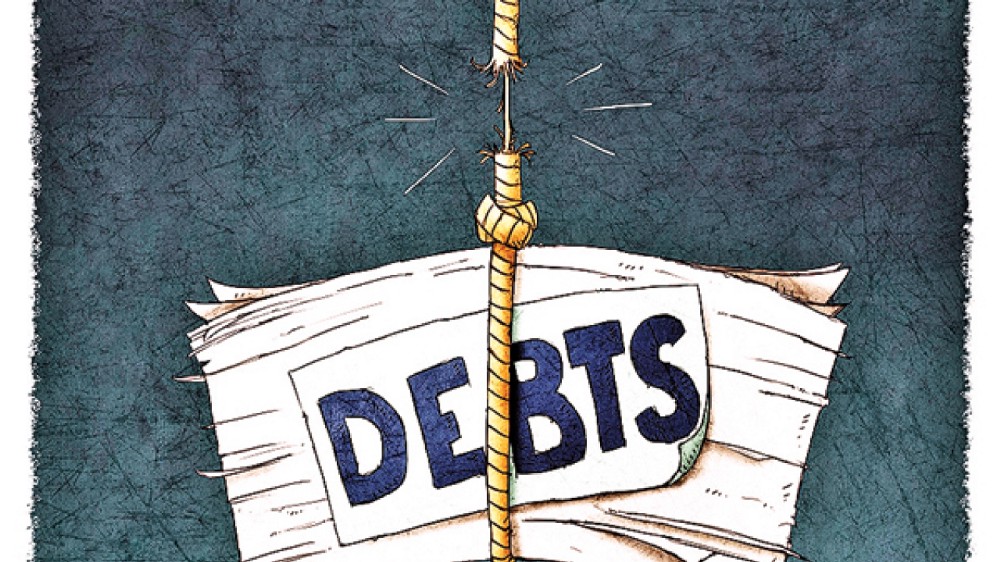Reserve Bank of India has decided to establish a Public Credit Registry to bring about more transparency in the financial markets. The decision has been taken on the recommendation of YM Deosthalee Committee which was focused on tackling poor credit assessments by the banks. In this background, it becomes important to understand as to why we need such a body in the first place and what purpose is it intended to serve. Moreover, would establishing such a body be enough to efficiently address the issue of rising Balance Sheet problems of the banks?
Public Credit Registry (PCR) would be a central record-keeping body which would make it mandatory for financial institutions to maintain the record of credit performance and other external liabilities of all its individual as well as corporate borrowers. It also mandates reporting on loans by both the lender and the borrower and the entire registry will be open for inspection to all the stakeholders — borrowers, banks, investors, etc. This body differs from the Credit Bureaus that are regulated by RBI under the Credit Information Companies (Regulation) Act, 2005, as Credit Bureaus only capture limited information about the borrower and are not adequately transparent. Similarly, PCR also differs from Central Repository of Information on Large Credits (CRILC) which was created by RBI in 2014 for enabling Scheduled Commercial Banks to report borrower information for loans exceeding INR 50 million. Unlike PCR, CRILC information is shared only with the reporting banks and not with the diverse set of stakeholders and the same is also not available for public inspection.
Therefore, PRC is a step forward for harnessing greater transparency in the banking system. However, why is transparency so important in the banking sector? The answer lies with the practice which is followed by banks in disbursing and securitizing loans and the perils in which they find themselves today. Rising number of Non-Performing Assets, Twin Balance Sheet Problems, and sluggish recovery and securitization mechanism, all reflect upon the shortsightedness and information asymmetry plaguing the credit activities. Due to the lack of reliable and adequate information, subjectivities prevail in the credit negotiations that lead to both the borrower and the lender relying on information that is limited to their transactions. According to Dr. Viral Acharya, lack of credit registry makes the market opaque, which leads to ‘pecuniary externality’ wherein outcomes of one loan contract spillover to the terms of other loan contracts and the good borrowers get affected by the monopoly of information held by the lender.
The central repository such as PCR would help addressing the credit ailments in multiple ways. First, and the most important, it would provide an objective data to banks to take their credit decisions more confidently and in an enhanced strategically informed manner. Banks will be asked to update the entire credit history and allied business performance of the borrowers on the PCR database. This would help in reducing the credit risk and the risk of new loans turning into NPAs.
Second, it would create a level playing field in the financial markets. Borrowers can now approach lenders with a reliable credit information and reputation and would no longer be the victims of information monopoly resulting from market opacity. Such level playing field will make it near impossible for banks to discriminate between different sizes of borrowers.
Third, it will work towards credit discipline and credit rationality. Banks can personalise credit decisions and negotiations to favour the good borrowers and be strict towards defaulters. Instead of generalised industry information, specific information on collateral valuation of the borrower will help banks in rationalising the credit and security decisions.
Despite PCR being a move in the right direction, it is not enough for curing the complex ailments plaguing the credit scenario today. It’s not enough for banks to rationalise credit decisions to solve the Twin Balance Sheet problems that are looming large. Therefore, measures such as credit transparency shall be assisted with a development of robust secondary credit markets where these bad loans can be converted into priced assets for further investment by Qualified Institutional Buyers. In Sweden, such securitisation process is conducted by government owned asset reconstruction companies and the results have been quite positive.
Development of secondary markets solves the liquidity issue of the banks and helps them in sharing the burden of rising NPAs. Taponeel Mukherjee argues that the strict regulations on how much of an originated loan a bank can hold on its balance sheet will help in raising the credit standards. If we will create a secondary market for investing in bank loans in a standardised format, it will help in risk diversification and induction of greater liquidity. Bank loans can be classified and priced according to mark-to-market valuation and then be put to secondary market for investment in such assets.
The development of Public Credit Registry should happen along with the development of efficient secondary market for loan securitisation. Countries like Portugal and Belgium have near complete adult coverage of public credit registry which has led to substantial growth in public lending. In India, Ministry of Electronics and Information Technology has also voiced for using Big Data to conduct risk assessment. All these measures link accuracy and availability of data with efficient credit practices.
Such connection has to be propelled by independent, transparent, and accountable credit rating agencies that use the data in central repository to give a holistic and most accurate qualitative valuation to the loan assets. The practices of ‘moral hazard’ (giving credit on standards lower than the ideal) and ‘information monopoly’ have to be replaced by transparency, data availability, and information sharing.
Post Disclaimer
The opinions expressed in this essay are those of the authors. They do not purport to reflect the opinions or views of CCS.


